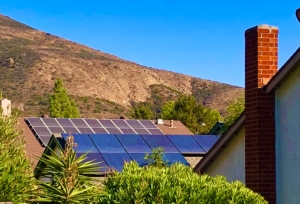Conservation Committee Priorities
The Conservation Committee meets on the 2nd Monday of each month at 6;30pm in the Chapter office. All members are welcome to attend. For more information contact Ron Askeland, Conservation Chair, here.
The Conservation Committee maintains liaisons with government agencies and non-government organizations in San Diego and Imperial counties in order to advocate for wildlife, parks, planned and affordable housing, and zero waste. We work to decrease green house gas (GHG) emissions, vehicular miles travelled (VMT), urban sprawl and wildfires. We strive to preserve clean air, water and a sustainable climate for ourselves and future generations to explore, enjoy and protect.
We challenge building in the pathway of wildfires. We contest building communities distant from evacuation corridors and public transport. We encourage projects that are publicly vetted, that various Requests For Proposals (RFP) are considered, and that proper investigation is conducted in order to keep people and nature out of harm’s way.
Sierra Club supports, opposes or takes no position on issues only after expert advice and careful study of environmental laws, such as the California Environmental Quality Act (CEQA), National Environmental Policy Act (NEPA), Climate Action Plan (CAP), The Multiple Species Conservation Program (MSCP), and federal, state and local laws and regulatory agencies, such as the California Air Resources Board (CARB) and the California Coastal Commission (CCC). https://www.climatechange.ca.gov/state/legislation.html
The Conservation Committee discusses plans and actions on these issues every second Monday of the month. Some members attend to tackle environmental problems in their community. Others come to learn, help and attend public government meetings. Others collaborate with Subcommittees to develop solutions. We have a Forestry Subcommittee focused on stewardship of the Cleveland National Forest and Cuyamaca State Park. A Water Conservation Subcommittee is studying how to increase usage of grey water and rain barrel systems. Our Zero waste subcommittee is working hard to educate everyone on the need to reduce expendable products and our Transportation Subcommittee is playing a key role in our regions transportation planning. The Seal Society recently achieved a major victory at the California Coastal Commission in protecting the harbor seal in La Jolla.
Why These Priorities Are Important to Us
Biodiversity
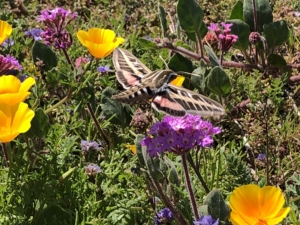
Hummingbird Moth. Photo by Cynthia Wootton.
Bats, Birds, bees, and butterflies pollinate our foods. Tadpoles, feed on algae, which filter and clean our water. Frogs, salamanders, birds, dragonflies eat ticks, mosquitoes, Arthropods and other bugs harmful to humans. They are a natural form of pest control. Earthworms enhance our soil like a “tractor, fertilizer factory and dam, combined!”
Humans, flora, fauna and habitats exist in a vital balance, like a house of cards. As more species die out, the house of cards collapses for all species. Each species of plant, animal, and microorganism, no matter how small have a critical role in healthy and thriving ecosystems. The biodiversity that establishes itself, in turn boosts the ecosystem. Diversity in species and their genes strengthens their adaptability to adversity and disaster. Biodiverse ecosystems generate soils formation, nutrient and carbon storage, water and air purification, food and climate stability. The larger the area covered by biodiverse ecosystems, the stronger the gene pool. The larger the number of species protected within these ecosystems, the more sustainable it will be in helping human survival.
http://www.globalissues.org/article/170/why-is-biodiversity-important-who-cares#WhatisBiodiversity
https://www.nature.org/en-us/get-involved/how-to-help/places-we-protect/san-diego-county/
http://www.sciencemadesimple.co.uk/curriculum-blogs/biology-blogs/3-reasons-why-frogs-are-so-important-to-the-ecosystem
The Multiple Species Conservation Program (MSCP), Open Space, and Parks
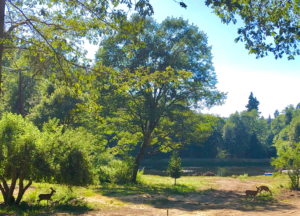
Deer wandering out from Palomar Mountain State Park. Photo by Cynthia Wootton
Together with many different groups, the city and county developed a plan for preserving land and parks known as The Multiple Species Conservation Program (MSCP). San Diego, is one of the nation’s most biologically diverse counties. There are approximately 200 threatened or endangered species. Officially, the MSCP protects this biodiversity and enhances our quality of life.
In open spaces, we preserve ecosystems and chaparral which sequester as much carbon as forests. In parks, we support the health of our communities.
We team up with many of the projects of companies and labor, but not ones that harm these areas. Petitioners try to convert these lands often because they are a cheaper alternative to purchasing other land.
Pollution and Destruction
Developments near watersheds cause run off from pesticides. Also, poisons are used to kill the natural wildlife.
Fires
Developments near wild areas bring wildfires. More people bring more power lines and accidents that cause most fires, (embers from parties, smokers, appliances, old fences and decks, especially during Santa Anna wind storms). Fires destroy ecosystems that sequester carbon and pollute the air. They cause immediate disaster to the economy, personal finances and human health.
https://www.sandiegocounty.gov/content/dam/sdc/pds/mscp/docs/SCMSCP/FinalMSCPProgramPlan.pdf
https://www.fws.gov/refuge/San_Diego/about.html
http://hikingsdcounty.com/san-diego-national-wildlife-refuge-sweetwater-river-traill/
https://www.sandiego.gov/planning/programs/mscp/summary
The California Environmental Quality Act (CEQA)
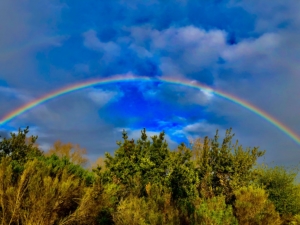
Photo by Cynthia Wootton
CEQA ensures that multiple species and endangered ones can thrive. Generally, CEQA requires that state and local government agencies must inform decision makers and the public about the potential environmental impacts of proposed projects. It seeks to reduce those impacts.
CEQA seeks to reduce those impacts:
–It protects the right of the public to weigh in on community land-use decisions (including those made by the San Diego Cities Councils and County Board of Supervisors).
–It requires decision-makers to consider and adopt alternatives or mitigation measures to reduce significant adverse environmental impacts.
Sierra Club California is a leader in the defense of CEQA, which became law in 1970. It is our state’s landmark environmental law.
https://www.sandiego.gov/sites/default/files/legacy/development-services/pdf/news/sdtceqa.pdf
https://www.sandiego.gov/development-services/public-hearings-meetings-notices/ceqa-final-documents
Water, Watersheds, Wetlands and Vernal Pools
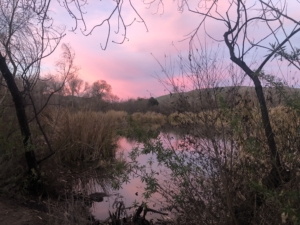
Photo by Cynthia Wootton
Water is a major issue in San Diego. Climate disruption is shrinking snowpacks, lengthening droughts, and drying groundwater. We need to preserve all our natural water collection sites, which store and release water into the earth, fill up our groundwater, where concrete and other surfaces can’t. Watersheds, wetlands and vernal pools collect precipitation and preserve biodiversity, endangered species and riparian zones that help filter pollutants, anchor soil and absorb water, and minimize the severity of floods and landslides. They provide habitat for birds, plants, animals, and fish. They offer cleaner air and water for the enjoyment of people who run, walk, bike, birdwatch, and participate in educational activities.
San Diego “County is home to 11 westward draining watersheds,” including Los Penasquitos, Mission Bay-La Jolla, San Diego River, and San Diego Bay. They join with networks of creeks, such as Chollas Creek, Famosa Slough, and Rose Creek and they terminate as wetlands.
Conservationists strive to preserve these areas and, where possible, we support habitat restoration, such as REWILD Mission Bay.
Since we plan for sustainability and health over the long term, we support The City of San Diego’s Potable Water Reuse (PureWater) Project as well as use of recycled grey water and rain barrell capture.
Vernal Pools
Vernal pools are “hotpots of biodiversity” for “a large number of rare, endangered species, and endemic species.” They are seasonal wetlands that harbor “flora and fauna that, in some cases, aren’t found anywhere else on the planet.” Certain amphibians, such as frogs and salamanders “return each year to breed in the same pond where they were born, bypassing other suitable pools and navigating man-made obstacles like roads, construction sites, and golf courses.”
City, county, state and federal laws officially protect these areas. “Despite this fact, about 90% of vernal pool ecosystems in California have been destroyed,” primarily due to careless development. Countless rare species were destroyed forever.
https://www.sandiegocounty.gov/content/sdc/dpw/watersheds/Watersheds.html
https://www.sandiego.gov/thinkblue/public-education/watershed-coordination
http://sdrc.ca.gov/about/
https://rewildmissionbay.org
https://www.sandiego.gov/planning/community/profiles/encanto/chollascreek
https://www.sandiego.gov/planning/programs/mscp/vphcp
http://www.californiachaparral.com/vernalpools.html
http://content.yardmap.org/learn/amazing-animals-that-use-vernal-pools/
https://www.wildlife.ca.gov/Conservation/Plants/Vernal-Pools
https://www.epa.gov/wetlands/vernal-pools
https://www.sdcwa.org/node/9218
https://www.sandiego.gov/public-utilities/sustainability/recycled-water
For further training on these issues above, see:
https://sandiegosierraclub.org/sierra-club-environmental-101-training/
Zero Waste and Recycling
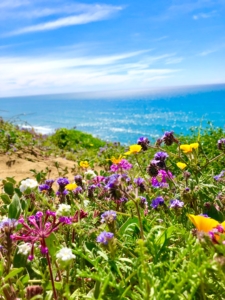
Photo by Cynthia Wootton
Other countries no longer recycle for us. The City of San Diego hands recycling over to third party haulers. The Conservation group’s Zero waste Subcommittee is examining the pathways to help City’s Zero Waste ordinance and implementation plan. They examine ways to shrink landfills and to implement newly emerging recycling technologies.
https://www.sandiego.gov/sites/default/files/zwplan.pdf
San Diego’s Climate Action Plan (CAP)
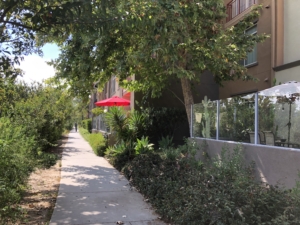
Photo by Cynthia Wootton
Our efforts throughout the county county help to support a San Diego Climate Action Plan (CAP) that will fight climate disruption. It’s targets are determined by California’s Climate Plan to reduce greenhouse gas emissions as measured against to 1990 levels:
• Reduce to 1990 levels by 2020 (AB32)
• 40% reduction by 2030 (SB32)
• 80% reduction by 2050 (Executive Order S-3-05)
The San Diego Climate Action Plan (CAP) binds the city to cutting its carbon emissions in half by 2035. Key strategies to achieve this include:
• 100% Clean Energy, achieved through Community Choice Energy
• Commuter mode share traveling by biking, walking, public transit and Zero Emission Vehicles
• Municipal fleet conversion to Zero Emission Vehicles
• Dense infill development and affordable housing near jobs and transit
• Zero Waste by a specified date
• Increased tree canopy with drought-tolerant species
• Water capture and recycled water projects.
Some examples of achieving this would be to increase and preserve parks and open space, preserve wetlands, plan paths for bicycles, walkways, Neighborhood Electric Vehicles (NEV) and other transit options that reduce green house gases.
https://www.sandiego.gov/sustainability/climate-action-plan
https://ww3.arb.ca.gov/cc/cleanenergy/clean_fs2.htm
https://leginfo.legislature.ca.gov/faces/billTextClient.xhtml?bill_id=201520160SB32
https://www.climatechange.ca.gov/state/legislation.html
https://www.climateactioncampaign.org/climate-action-plans-101/
Community Choice Energy (CCE) (CCA)
Photo by Cynthia Wootton
Sierra Club supports establishing CCEs and JPAs (Joint Powers Authority) throughout San Diego County, providing an alternative to SDG&E’s total control.
In February 2019, the San Diego City Council voted to establish a CCE.
SDG&E equipment still delivers the energy to homes, manages the grid and performs the billing services, it’s just the purchasing branch that’s different. Implementations of CCEs in other California cities and other states prove that it works and saves money as do all the extensive feasibility studies.
Here’s how it works. A city or community forms a non profit CCE that hires a knowledgeable purchasing team to purchase its energy instead of paying for purchases by SDG&E.
Once San Diego voted for it, other cities in the county wanted to join in. When a group of cities joins together to create a CCE, they form a non profit Joint Powers Authority, or JPA. The determination about which cities want to be involved is ongoing. The larger the group served, the better the purchasing power.
Purpose
CCEs and JPAs create strong clean energy policies that are essential to reversing climate change. They save families money, reduce GHG emissions, accelerate clean energy, create local jobs and result in profits that can be reinvested back into the community.
https://sdcommunitychoice.org
https://en.m.wikipedia.org/wiki/Community_Choice_Aggregation
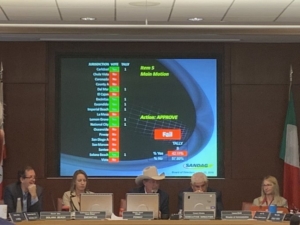
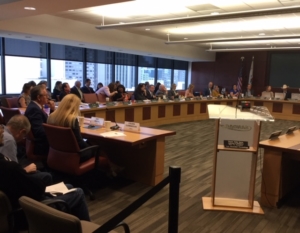
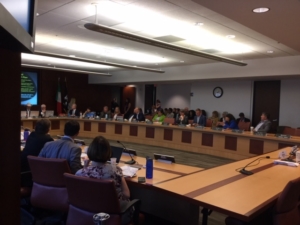
SANDAG Meetings. Photos by Cynthia Wootton
In California, almost 40% of greenhouse gases come from transportation.
The San Diego Association of Governments (SANDAG) recently announced a program of 5 BIG MOVES to reduce greenhouse gases and meet our climate action plan.
The Conservation group’s Transportation Subcommittee supports these, and is working with cities and the county to make plans that work for them.
SANDAG’s 5 BIG MOVES are as follows:
–“Complete Corridors” improves connections between densely travelled areas.
–“Transit Leap” are high-capacity, high-speed, and high-frequency transit services.
–“Mobility Hubs” are centers providing travel options after taking public transit.
–“Flexible Fleets” are on-demand, shared, electric vehicles to take people to personalized destinations.
–“Next OS” is the Next Operating System which integrates all the above strategies “together by connecting users, transportation service providers, and infrastructure.”
https://lao.ca.gov/Publications/Report/3912
https://www.sdforward.com/mobility-planning/5-big-moves
http://www.sandac.org
Planned Development VS Sprawl
Sierra Club is for planned development and against certain sprawl projects, especially in high severity fire hazard Wildland Urban Interfaces. We stand for developments in safe, planned areas. This goal coincides precisely with the goals of our local Climate Action Plans (CAP), the new goals of SANDAG’s 5 Big Moves, and many other goals (saving money, etc). SANDAG seeks to pull the county together with improved public transportation from each major residential area to each major employment area. Building outside these plans creates more costs and hazards. Urban sprawl increases vehicle miles travelled (VMT), our major source of greenhouse gases (GHG), which cause climate disruption. Climate disruption brings more heat, drought and more fires. Infrastructure from sprawl increases cost of maintenance of water pipes, roads, lands, by city and county authorities, as well as emergency and evacuation plans. Many fires are caused by power lines and infrastructure. By reducing urban sprawl, power companies can focus on safety rather than scattered infrastructure. Also, firefighters can concentrate their efforts.
Certain sprawl projects can lead to tremendous costs and burdens to every other segment of our society. That’s why we have to plan developments more carefully.
Seal Society

Photo by Roxy
The Conservation group’s Seal Society preserves the habitat, life cycle and survival needs of the harbor seals at Casa Beach, also known as Children’s Pool Beach in La Jolla. This is an important rookery for harbor seals where “120,000 monthly visitors” watch them “resting, mothers birthing, pups nursing, males splashing the water with their flippers, and couples swimming together in their mating ritual.” Docents offer educational programs as well as opportunities to train more docents. Over a million visitors come from all over the world to see seals in a safe viewing environment. Although there are federal, state, and local ordinances that prohibit harassment of these animals, the Seal Society has been instrumental in reducing their harassment, which risk stillborn and pup abandonment. Here at Casa, humans and wildlife coexist.
Like the Seal Society Facebook page here.
http://www.marinemammalcenter.org/education/marine-mammal-information/pinnipeds/pacific-harbor-seal/
https://pages.ucsd.edu/~jmoore/oldljfos/index.html
Forest Subcommittee
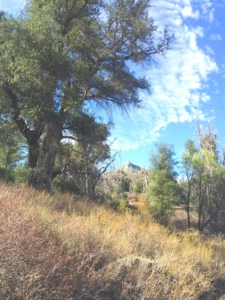
Photo by Cynthia Wootton
The Forest Subcommittee has spent decades preserving some of the last remaining wildest places we have left in San Diego County.
We rely on volunteers to adopt areas they love, monitor them and report back to the conservation committee once a month. This also helps the US Forest Service (USFS), which is underfunded. We keep tabs on Gold Spotted Oak Borers (GSOB), feral pigs, land status and violations, potentially harmful projects. We keep tabs on the USFS Schedule of Proposed Actions (SOPA) undergoing environmental analysis. We use NEPA guidelines to start preservation campaigns and recommend Congressional action.
There are many other different types of volunteer opportunities. Volunteers can arrange educational programs, such as talks with the new Forest Supervisor. Or talks could be about stewardship, backcountry manners and skills including not building fires, or not smoking in the forest, or advising against certain control burns.
The USFS is our main focus but not the only one. We interface with the BLM, when possible, state forests, and most especially the US Fish and Wildlife and the CA Fish and Wildlife, as well as several other environmental groups, our partners, the San Diego River Park, and the Native Plant Society, and sometimes the San Diego Wildlife Federation, encompassing a large body of hunters and others.
Fire Risk Reduction, Health and Prosperity
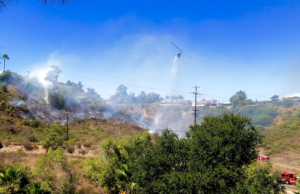
Photo by Cynthia Wootton.
Fire risk reduction is critical to the Sierra Club Conservation Group’s mission to enjoy, preserve and protect the planet. Fire risk reduction helps mitigate the high cost of climate disruption. It protects our wild lands that sequester as much carbon as forests. It preserves our water and air quality. It prevents human suffering, loss of health, property and lives. It reduces economic instability for people, businesses, including insurance companies. It helps to stop depleting local, state and federal funding for infrastructure, resources and reparations. It preserves biodiversity.
Our primary goal should be to save lives and property, not how do we try to control nature. Wildfires are inevitable, but the destruction of our communities is not. Choosing to develop land next to wild areas can lead to tremendous costs and burdens to every other segment of our society.
https://abc7news.com/most-destructive-wildfires-in-california-history/2516857/
How Fires Start and Spread
Fire has always been part of the environment of California and is becoming more prevalent due increasing numbers of people and climate change.
—Most fires are caused by people especially in the wildland urban interface (WUI). Steep slopes, canyons and land ”bowls” offer wind tunnels and traps for fires. These are called high fire hazard areas. Building homes in such locations is merely offering highly concentrated amounts fuel (homes) for fires.
—Santa Ana can fan fires from September through March. Winds, drought, dry weather and heat waves can blow any fire’s starting point into our communities. In these conditions, all it takes is one spark from a smoke out back, a discarded cigarette, a campfire, fireworks, a car accident, a barbecue. Fires can start when a spark is caused by a lawn mower striking a rock, a faulty electrical box, a fire pit, a candle, faulty or downed power lines that come with urban sprawl.
—Fires spread from tiny embers. High winds can carry embers over cleared land, nicknamed “bowling alleys,” until they sneak into structures. Without the interference of thinned, lightly irrigated vegetation, the house becomes the perfect ember catcher.
—Embers enter homes through attic vents, under roofing materials, and ignite flammable materials around the home (litter in the gutter, wood stacks, wood fencing).
—Fire risk in our communities must be prevented “from the house out rather than from the wildland in.”
https://www.nytimes.com/2018/08/20/us/california-wildfires-human-causes-arson.html
http://www.californiachaparral.org/bprotectingyourhome.html
https://www.kpbs.org/news/2018/nov/20/camp-fire-fatalities-spark-fears-about-recent-land/
https://www.sandiego.gov/fire/about/majorfires
https://www.biologicaldiversity.org/programs/urban/pdfs/San-Diego-BoS-Wildfire-Comment-Letter.pdf
https://www.nps.gov/media/article-search.htm#q=human-caused%20fire
https://24restore.com/7-most-common-causes-of-house-fires/
https://community.nfpa.org/groups/ifma/blog/2019/01/02/how-common-are-house-fires
https://www.sandiego.gov/fire/services/brush/severityzones
SOLUTIONS
Oppose Urban Sprawl and Building in Fire Hazard Areas:
The foremost solution is to stop urban sprawl and new building in high severity fire hazard Wildland Urban Interfaces. Many fires are caused by power lines and infrastructure. By reducing urban sprawl, power companies can focus on safety rather than scattered infrastructure. Also, firefighters can concentrate their efforts.
Sprawl brings tremendous costs and burdens.
(Please see the section on sprawl above)
https://sandiegosierraclub.org/get-involved/conservation/our-priorities/
Creating Fire Defensible Space
As far as reducing the flammability of homes is concerned, you can install ember resistant vents, Class A roofing, sprinklers operated by an independent system, and remove flammable materials from around major structures. Defensible space is 100 feet of lightly irrigated vegetation, branches pruned, dry leaves removed, gutters cleared, wood stacks and other wood materials eliminated. Swimming pools or other water supplies with independent pumps can be used to supply exterior sprinklers. It has been found in the US and other parts of the world that it is best to plant native plants with some resistance to fires.
Again, please remember, fire reduction must start from the house out rather than from the wildland in.
https://www.readyforwildfire.org
http://www.californiachaparral.org/bprotectingyourhome.html
https://anrcatalog.ucanr.edu/pdf/8393.pdf
http://firesafesdcounty.org/wp-content/uploads/2017/05/Comprehensive-Fire-Resistant-Plant-List.pdf
https://www.latimes.com/archives/la-xpm-1993-11-07-re-54195-story.html
https://www.mountainstrust.org/campaigns/flora-fire-program-dont-fuel-a-wildfire-plant-native/
https://www.sciencelearn.org.nz/resources/2658-low-flammability-garden-saves-home
Fire Safe Councils
Fire safe councils are similar in concept to volunteer neighborhood watch groups. Their purpose, however, is to reduce fire risk by making homes less flammable and educate homeowners how to create proper defensible space. Volunteers must be proactive about getting community involvement and intensive training.
http://firesafesdcounty.org/resources/preparing-for-wildfire/
Personal Safety
Since fire is a regular occurrence within San Diego county, people need to take time for the following:
—Know several evacuation routes.
—Know cool zones near you, their hours of operation, and whether they accept pets.
—Know the nearest hospitals in case of emergency.
—Have detailed fire evacuation plans, posted, reviewed, and practiced.
—Know whether there are neighborhood playgrounds or large areas with ground rather than hot pavement in order to shelter in place if necessary.
—Know possible fire safe zones or develop them for your community, such as the park at the center of the Eureka Springs development in Escondido.
—Regarding pets, if possible, move yourselves and your pets into the shade or an air-conditioned area. Know which your vets take in pets during heat waves and fires. Some pet stores allow animals. If the animal likes water, then pools or the ocean might be helpful. Most libraries take service animals only, the cool zone link below show a few that take pets. Otherwise, apply ice pads or cold towels to head, neck and chest. Drink small amounts of cool water or lick ice cubes. Animals breathe through paws so be careful of hot pavement.
https://www.readyforwildfire.org
https://www.health.state.mn.us/facilities/
https://www.sandiegocounty.gov/content/sdc/hhsa/programs/ais/cool_zones.html
https://www.sandiegocounty.gov/content/dam/sdc/hhsa/programs/ais/documents/Cool_Zone_Sites_2019.pdf
https://www.eastcountymagazine.org/wild-fire-alerts
http://www.trbas.com/media/media/acrobat/2018-07/70208739537460-06161942.pdf
Fire Expert Information
The Sierra Club Conservation Committee fire guidelines are based on the studies of independently-funded experts or fire-fighting veterans devoted to two goals:
1) scientific study of the causes of fires and 2) saving the lives of people and wildlife. Some government projects can be overly influenced by many other causes and values which might be important, but would not necessarily achieve these two goals.
Here are some of these experts:
Richard Halsey, Director, California Chaparral Institute, Escondido, Biologist, Teacher, and author of many articles, and books including “Fire, Chaparral, and Survival in Southern California,” published in 2008.
https://www.latimes.com/opinion/op-ed/la-oe-halsey-firesafe-20181211-story.html
